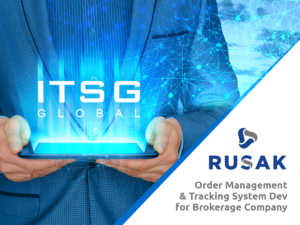ChatGPT rivals your business should know

Quick insights
- The AI market offers options beyond the well-known ChatGPT
- The latest AI models can rival human performance in tasks like multilingual translation
- Major tech companies are investing billions in AI integration
The expanding world of AI language models
Your next competitive edge might be an AI you haven’t heard of yet. While ChatGPT has captured widespread attention, the AI landscape is far more diverse and dynamic. New models are continuously developed, each bringing unique capabilities to the table. Industry giants and emerging players alike are creating increasingly sophisticated language models that can transform business operations.
Why look beyond ChatGPT
While ChatGPT has set a high bar, there are compelling reasons for businesses to explore alternatives. Different AI models excel in various domains, from data analysis to creative tasks. Exploring alternatives can lead to more tailored solutions for your specific industry challenges.
Among the many AI language models on the market, a few stand out as particularly noteworthy:
Claude (Anthropic)
Developed by Anthropic, Claude boasts advanced language understanding and generation capabilities. Its ethical AI framework focuses on reducing biases, making it an attractive option for businesses prioritizing responsible AI deployment. As of September 2024, Claude 3 models (Opus, Sonnet, Haiku) all feature a 200,000-token context window, with the ability to accept inputs exceeding 1 million tokens if required [1]. Anthropic has also introduced a Claude Enterprise plan with a 500,000-token context window, more than double the previously available capacity [2].
Gemini (Google)
Google’s Gemini model is a multimodal powerhouse, capable of seamlessly combining text, code, audio, image, and video. As of October 2024, Google has updated its Gemini model lineup. The latest versions include Gemini 1.5 Pro with a 2 million token context window (via waitlist), Gemini 1.5 Flash (a new, lighter-weight model optimized for speed and efficiency), and Gemini Nano with expanded multimodal inputs [3].
Bing AI (Microsoft)
Microsoft’s Bing AI leverages the company’s software ecosystem, seamlessly integrating with popular business tools like Microsoft 365. Its natural language processing and multi-turn conversation abilities allow for enhanced search experience, task assistance for writing and coding, and visual content analysis [4].
LLaMA (Meta)
Meta’s open-source LLaMA model stands out for its customization potential. Businesses can adapt LLaMA to develop custom, industry-specific solutions. Its ability to run efficiently on various hardware configurations makes LLaMA a cost-effective option, particularly for smaller businesses and research initiatives. Meta’s Llama 3.1, released in July 2024, features 405 billion parameters and has variants with 8B and 70B parameters. It has a context window of 128,000 tokens [5]. Llama 3.1 405B is described as the first openly available model that rivals top AI models in state-of-the-art capabilities for general knowledge, steerability, math, tool use, and multilingual translation [6].

Key differences and business applications
Each AI model brings unique strengths to the table, catering to different business requirements. Claude’s emphasis on ethical AI and bias reduction makes it well-suited for customer-facing applications where trust and fairness are paramount. For example, Lex, an AI-powered writing platform, integrated Claude to provide writers with comments, high-level document feedback, and style checks, resulting in a 20-30% decrease in monthly customer churn and increased user confidence and productivity [7].
Claude has also proven valuable for data enrichment and automation. Clay, a data platform, uses Claude to auto-enrich inbound leads, build custom segmentation, and automate Salesforce opportunity updates, leading to a 3x increase in data enrichment coverage and significant time savings [8]. In the legal domain, Steno leverages Claude to help attorneys find critical insights in case transcripts, demonstrating its potential for legal document analysis [7].
Gemini’s multimodal capabilities open up possibilities for advanced content creation and analysis across various formats. Woolworths, Australia’s leading retailer, uses Gemini’s complex data analysis and insight extraction capabilities to create next-generation promotions and assist customer service representatives in summarizing previous customer interactions in real-time [9].
Major IT company Cognizant is expanding its partnership with Google Cloud to integrate Gemini AI into its software development processes. Cognizant plans to train over 70,000 associates on Google Cloud’s AI and integrate Gemini within its internal operations and platforms. The company’s developers will use Gemini to write, test, and deploy code faster and more effectively, improving the reliability and cost efficiency of building and managing client applications [10, 11].
For businesses already invested in the Microsoft ecosystem, Bing AI’s seamless integration with Microsoft tools makes it a natural choice for task assistance and enhanced search experiences. Microsoft 365 Business Standard and Business Premium customers can use Bing AI (now part of Microsoft Copilot) for various tasks, including writing assistance and problem-solving [12].
LLaMA stands out for its open-source nature and customization potential, making it an attractive option for businesses seeking tailored AI solutions or conducting in-house AI research and development. Accenture, for instance, is using LLaMA 3.1 to build a custom language model for ESG reporting [6]. Groq, an AI infrastructure company, has provided over 400,000 developers with 5 billion free tokens daily using the LLaMA suite of models, fostering research and development in AI and machine learning [6].

Making AI work for your business
When considering AI adoption, businesses should carefully evaluate several key factors to ensure the chosen model aligns with their specific objectives and priorities. It’s crucial to assess how well each AI model fits with the organization’s goals, taking into account ethical considerations, data security requirements, and scalability.
Another critical aspect is the ease of integration with existing systems. Businesses should look for models that can work well with their current technology stack and workflows, minimizing disruption during implementation.
Customization and adaptability also play a vital role in selecting an AI model. Organizations should consider the level of fine-tuning each model offers, as those that can be tailored to specific industries or use cases may provide a competitive edge.
Cost and resource requirements should also be considered in the decision-making process. Evaluating the cost implications associated with each model, including hardware needs, training expenses, and ongoing maintenance, is essential for ensuring a sustainable AI adoption strategy.
Navigating these considerations can be challenging, which is why expert guidance can be invaluable. ITSG offers consultations and AI workshops to help businesses make informed decisions about AI adoption. Our team can assist in evaluating different AI models and developing strategies tailored to your unique challenges and goals.
Looking ahead
As businesses explore the potential of AI language models, new models and capabilities emerge at a rapid pace, giving rise to a notable trend: the development of specialized AI models tailored to specific niches or industries. One example is Verble, an AI wedding speech writer that creates personalized speeches for various wedding roles through a three-step process including brainstorming, draft creation, and AI-assisted editing [13]. In the culinary world, Gastrograph AI uses machine learning to predict what flavors people will like, helping chefs come up with new and unusual dishes [14].
The AI Haiku Generator on Columbia Climate School’s website, powered by the Da Vinci language model, showcases AI’s creative potential by composing haikus based on user-specified science or nature topics [15]. These focused models demonstrate the ability of AI to transform even the most specialized domains, offering innovative solutions and creative approaches that were previously unimaginable.
In the business realm, Walmart’s proprietary GenAI platforms, particularly the recently introduced Wallaby, demonstrate how AI can be used for specific operational needs. Wallaby is a series of retail-specific large language models, primarily designed to create customer-facing experiences that are highly contextual and tailored to the Walmart environment. By training Wallaby with decades of Walmart data and incorporating the company’s core values, the AI model can generate responses that align with Walmart’s brand and customer expectations [16].
Conclusion
The world of AI language models extends far beyond ChatGPT, presenting businesses with many opportunities to use artificial intelligence effectively. By considering the unique strengths and capabilities of models like Claude, Gemini, Bing AI, and LLaMA, organizations can find the best fit for their specific needs and improve their operations.
Staying informed and adaptable to new trends is key. By exploring all available AI options, you position yourself ahead of less-informed competitors. If you’re interested in learning more about how AI can benefit your business, book a free consultation with our experts.
Sources:
[1] Anthropic Claude Statistics 2024: Stats Facts and Trends You Need to Know (Parameters Size, Training Data, Token Numbers…) https://nikolaroza.com/anthropic-claude-statistics-facts-trends/
[2] Anthropic introduces Claude Enterprise plan with double context window, enhanced security – SiliconANGLE https://siliconangle.com/2024/09/04/anthropic-introduces-claude-enterprise-plan-double-context-window-enhanced-security/
[3] Gemini models | Gemini API | Google AI for Developers https://ai.google.dev/gemini-api/docs/models/gemini
[4] Media Search Group https://www.mediasearchgroup.com/blog/evolution-of-bing-ai-latest-features-and-benefits/
[5] LLAMA 3.1 vs Mistral Large 2 – Nebuly https://www.nebuly.com/blog/llama-3-1-vs-mistral-large-2
[6] Introducing Llama 3.1: Our most capable models to date – AI at Meta https://ai.meta.com/blog/meta-llama-3-1/
[7] Anthropic https://www.anthropic.com/customers/lex
[8] Clay https://www.clay.com/blog/anthropic-case-study
[9] Google Cloud https://cloud.google.com/transform/101-real-world-generative-ai-use-cases-from-industry-leaders
[11] Times of India https://timesofindia.indiatimes.com/technology/tech-news/cognizant-to-use-google-gemini-for-software-development-internal-operations/articleshow/108685028.cms
[12] Microsoft Community Hub https://techcommunity.microsoft.com/t5/small-and-medium-business-blog/work-faster-and-smarter-with-bing-chat-enterprise/ba-p/3957400
[13] Verble https://www.verble.app/wedding/
[14] Ptolemay https://www.ptolemay.com/post/the-ai-food-critic-transforming-culinary-apps-with-chatgpt-recommendationss
[15] Columbia Climate School https://news.climate.columbia.edu/2022/04/22/haiku-ai-generated-poetry/



